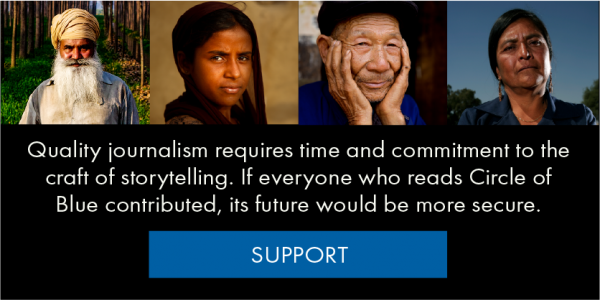The Stream, June 22: PFAS Contaminants in U.S. Drinking Water More Dangerous Than Previously Thought, Study Finds
The Global Rundown
A newly-released study finds that PFAS contaminants in U.S. drinking water are dangerous at lower levels than previously believed. Climate change and conflict are forcing displacement across the globe, jeopardizing water access, according to a United Nations (UN) report. New initiatives bring water to off-the-grid communities in the United States’ Navajo Nation. Algal toxins in Salem, Oregon’s drinking water rise above advisory levels again. Water availability deteriorates as the siege of Yemen’s Hodeidah city continues.
“People are saying water has been disrupted in parts of Hodeidah already. Some areas even prior to the war were not even connected to the main water supply.” –Saleem Al Shamiri, a livelihood coordinator with the Norwegian Refugee Council, in reference to the lack of water supplies in besieged Hodeidah. The rebel-held port city has been under attack by Arab alliance forces for more than a week. Reuters
In context: HotSpots H2O, June 18: Yemen’s Water Supply Jeopardized Again in Battle for Hodeidah.
Latest WaterNews from Circle of Blue
Announcing MISSION.4 – Redefining how powerful narratives and technology come together to tell the world’s most important stories about the competition between water, food, and energy in a changing climate.
U.S. Water Withdrawals Continue Marked Decline – The country is using less water, but latest USGS report shows influences of California drought on national data.
What’s Up With Water – Speaking of Water – Water Conflict Chronology – “Speaking of Water” host Eileen Wray-McCann speaks with the Pacific Institute’s co-founder and President Emeritus, Dr. Peter Gleick to discuss the connections between resource issues, environmental issues, and the broad area of international security and conflict.
By The Numbers
2 billion Number of people affected by water stress worldwide, according to the United Nations. Amid a recent evaluation the UN’s Sustainable Development Goals, the agency said that climate change and conflict are forcing millions to flee their homes. In turn, many displaced peoples are losing critical access to food and water. Reuters
40 percent Proportion of homes in the United States’ Navajo Nation that lack running water. For many residents, piped water is unaffordable, and water must be hauled daily. In response, a group called DigDeep is working to build off-grid water storage and pumping systems that will bring clean water directly into homes. PBS Newshour
Science, Studies, And Reports
A newly-released study by the Agency for Toxic Substances and Disease Registry (ATSDR) found that two major PFAS drinking water contaminants may be more dangerous than previously believed. In 2016, the U.S. Environmental Protection Agency (EPA) issued a “health advisory” claiming that exposure to perfluorooctanesulfonic acid (PFOS) and perfluorooctanoic acid (PFOA) above 70 parts per trillion was considered dangerous. The new study found “minimal risk levels” to be 7 ppt for PFOS and 11 ppt for PFOA. The Hill
In context: Congress passes defense bill that includes perfluorinated chemicals health study.
On The Radar
A drinking water advisory in Salem, Oregon, is likely to continue after algal toxins again measured above health advisory limits. On June 10, the city issued a ‘do not drink’ water advisory that was set to last at least two weeks. Toxins measured below advisory levels for 11 consecutive days, but bypassed safe levels again on Wednesday, June 20. The Statesman Journal
In context: Oregon Capital Battles Algal Toxins in Drinking Water.
Kayla Ritter is a recent graduate of Michigan State University, where she studied International Relations and Teaching English to Speakers of Other Languages. She is currently based in Manton, Michigan. Kayla enjoys running, writing, and traveling. Contact Kayla Ritter




Leave a Reply
Want to join the discussion?Feel free to contribute!